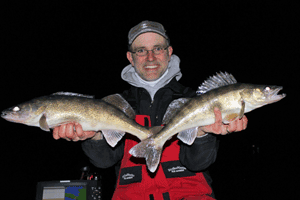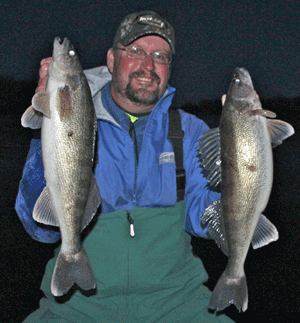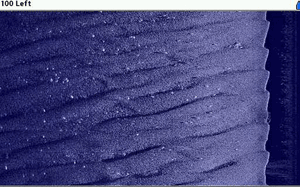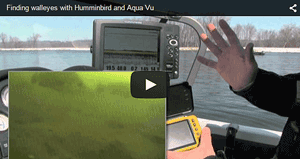Fishing Article Pre Spawn Walleye Strategies - Dr. Jason Halfen
 |
Catching pre-spawn river Walleye Changing water conditions demand versatile presentations.
|
I use my Humminbird Side Imaging system to find large concentrations of pre-spawn fish, often associated with mid-depth sand dunes that provide feeding opportunities as well as areas protected from the increasing current. |
|
 |
Although the fish have not moved, their feeding habits are certainly impacted by the drop in water temperatures. Fish that may have been willing to crack a ringworm or run down a crankbait just a week or two earlier will now be significantly less active. Catching such fish with consistency can take one of two approaches. Photo by Dr. Jason Halfen |
Dr. Jason Halfen owns and operates “The Technological Angler”, a media company dedicated to helping anglers learn to use their onboard technology to find and catch more fish. Their first full-length instructional video production, “The Technological Angler, Volume 1: Success with Side Imaging”, was the winner of the 2014 AGLOW awards-in-craft competition in the TV-fishing division.
"The Technological Angler, Volume 2: Integrated Technology" teaches anglers to harness the power of 2D sonar, Side Imaging, Down Imaging, 360 Imaging and the i-Pilot Link system, to find and catch more fish.
The Fishrapper, Fishing Blue Books, LLC - 44076 Co Rd 128, Deer River, MN 56636
218-246-2375 copyright©2016 Fishing Blue Books, LLC All Rights Reserved - last revised 01/05/2017
Current Fishing Reports • Current Video • Fishing Articles • Links • Contact

